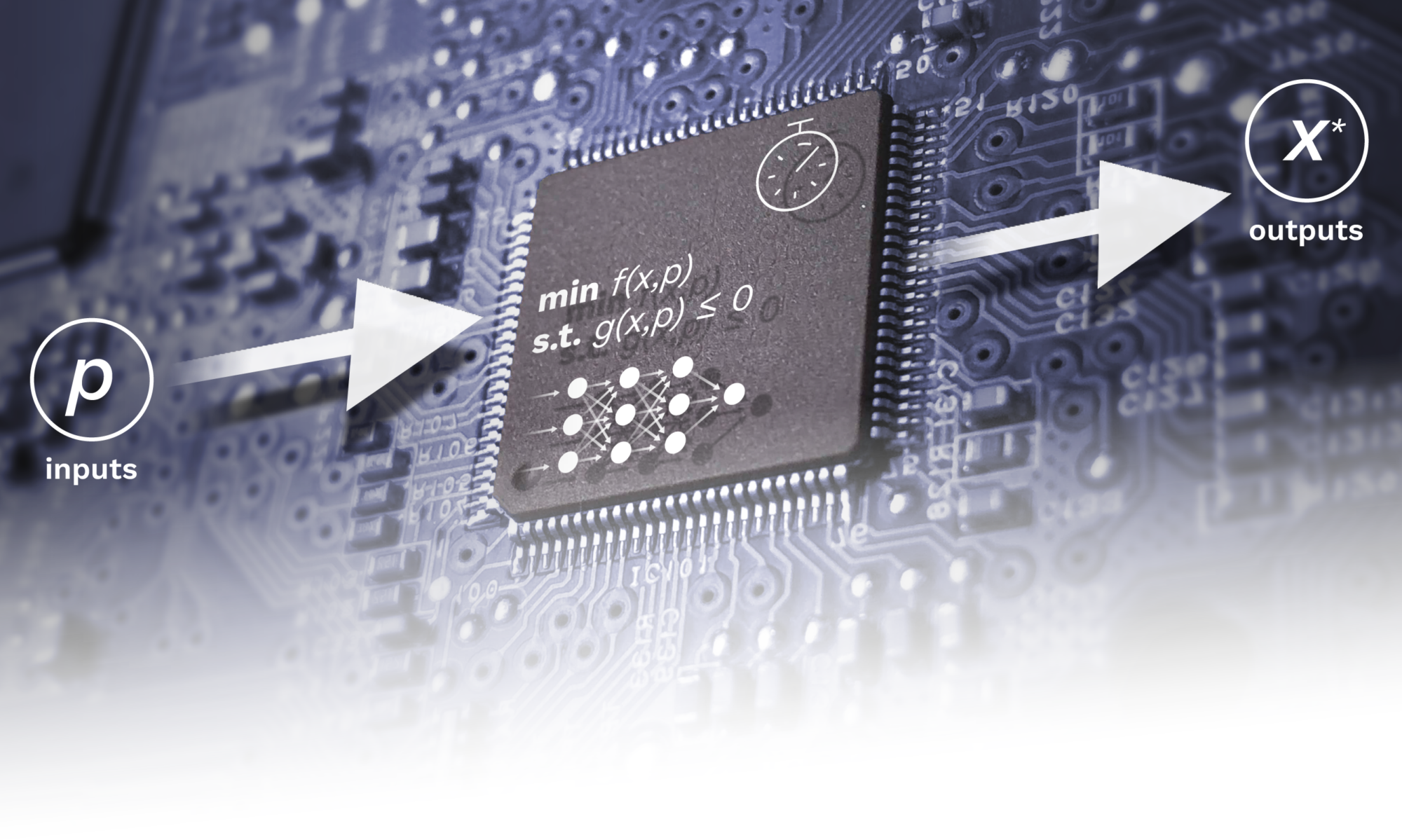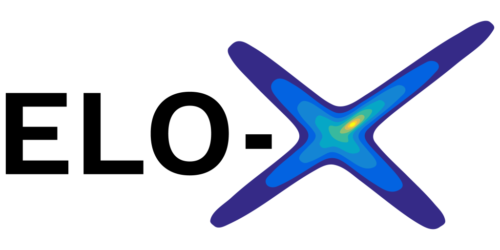Jing Xie
PhD Candidate in Information Technology – Systems and Control
Dipartimento di Elettronica, Informazione e Bioingegneria (DEIB)
Politecnico di Milano

Jing Xie graduated with a master’s degree in electrical engineering with a focus on automation and robotics at Technical University of Munich. He did an internship at Robert Bosch on in-car monitoring system using machine learning methods in Hildesheim. His master thesis was on tube-based incremental model predictive control for robot manipulators. His main research interest is learning-based MPC.
Project description
Machine Learning (ML) techniques, and in particular Recurrent Neural Networks (RNN), are gaining a wide popularity in the control community in view of their ability to obtain, from plant data, models of complex dynamic systems, characterized by a strong nonlinear behavior. However, theoretical results related to control design methods, and in particular Model Predictive Control (MPC) based on RNN, are still needed and fundamental issues must be considered. Jing Xie focuses on developing learning-based control algorithms for industrial systems.
Publications
Simpson, Léo; Xie, Jing; Asprion, Jonas; Scattolini, Riccardo
A Learning-based Model Predictive Control Scheme with Application to Temperature Control Units Proceedings Article
In: 2024 IEEE Conference on Control Technology and Applications (CCTA), pp. 675-680, IEEE, Newcastle upon Tyne, United Kingdom, 2024, ISSN: 2768-0770.
@inproceedings{xie2024learningbased,
title = {A Learning-based Model Predictive Control Scheme with Application to Temperature Control Units},
author = {Léo Simpson and Jing Xie and Jonas Asprion and Riccardo Scattolini
},
url = {https://arxiv.org/abs/2402.05606},
doi = {10.1109/CCTA60707.2024.10666571},
issn = {2768-0770},
year = {2024},
date = {2024-09-11},
urldate = {2024-09-11},
booktitle = {2024 IEEE Conference on Control Technology and Applications (CCTA)},
pages = {675-680},
publisher = {IEEE},
address = {Newcastle upon Tyne, United Kingdom},
abstract = {Temperature control is a complex task due to its often unknown dynamics and disturbances. This paper explores the use of Neural Nonlinear AutoRegressive eXogenous (NNARX) models for nonlinear system identification and model predictive control of a temperature control unit. First, the NNARX model is identified from input-output data collected from the real plant, and a state-space representation with known measurable states consisting of past input and output variables is formulated. Second, a tailored model predictive controller is designed based on the trained NNARX network. The proposed control architecture is experimentally tested on the temperature control units manufactured by Tool-Temp AG. The results achieved are compared with those obtained using a PI controller and a linear MPC. The findings illustrate that the proposed scheme achieves satisfactory tracking performance while incurring the lowest energy cost among the compared controllers.},
keywords = {},
pubstate = {published},
tppubtype = {inproceedings}
}
Xie, Jing; Bonassi, Fabio; Scattolini, Riccardo
Internal Model Control design for systems learned by Control Affine Neural Nonlinear Autoregressive Exogenous Models Working paper Forthcoming
Forthcoming, (Accepted by IEEE Transactions on Automation Science and Engineering).
@workingpaper{xie2024internal,
title = {Internal Model Control design for systems learned by Control Affine Neural Nonlinear Autoregressive Exogenous Models},
author = {Jing Xie and Fabio Bonassi and Riccardo Scattolini},
url = {https://arxiv.org/abs/2402.05607},
year = {2024},
date = {2024-02-13},
urldate = {2024-02-13},
abstract = {This paper explores the use of Control Affine Neural Nonlinear AutoRegressive eXogenous (CA-NNARX) models for nonlinear system identification and model-based control design. The idea behind this architecture is to match the known control-affine structure of the system to achieve improved performance. Coherently with recent literature of neural networks for data-driven control, we first analyze the stability properties of CA-NNARX models, devising sufficient conditions for their incremental Input-to-State Stability (𝛿ISS) that can be enforced at the model training stage. The model's stability property is then leveraged to design a stable Internal Model Control (IMC) architecture. The proposed control scheme is tested on a real Quadruple Tank benchmark system to address the output reference tracking problem. The results achieved show that (i) the modeling accuracy of CA-NNARX is superior to the one of a standard NNARX model for given weight size and training epochs, (ii) the proposed IMC law provides performance comparable to the ones of a standard Model Predictive Controller (MPC) at a significantly lower computational burden, and (iii) the 𝛿ISS of the model is beneficial to the closed-loop performance.}},
note = {Accepted by IEEE Transactions on Automation Science and Engineering},
keywords = {},
pubstate = {forthcoming},
tppubtype = {workingpaper}
}
Xie, Jing; Bonassi, Fabio; Farina, Marcello; Scattolini, Riccardo
Robust offset-free nonlinear model predictive control for systems learned by neural nonlinear autoregressive exogenous models Journal Article
In: International Journal of Robust and Nonlinear Control, vol. 33, no. 16, pp. 9992-10009, 2023.
@article{xie2023robust,
title = {Robust offset-free nonlinear model predictive control for systems learned by neural nonlinear autoregressive exogenous models},
author = {Jing Xie and Fabio Bonassi and Marcello Farina and Riccardo Scattolini},
url = {https://onlinelibrary.wiley.com/doi/full/10.1002/rnc.6883},
doi = {10.1002/rnc.6883},
year = {2023},
date = {2023-07-13},
urldate = {2023-07-13},
journal = {International Journal of Robust and Nonlinear Control},
volume = {33},
number = {16},
pages = {9992-10009},
publisher = {arXiv},
abstract = {This paper presents a robust Model Predictive Control (MPC) scheme that provides offset-free setpoint tracking for systems described by Neural Nonlinear AutoRegressive eXogenous (NNARX) models. The NNARX model learns the dynamics of the plant from input-output data, and during the training the Incremental Input-to-State Stability (𝛿ISS) property is forced to guarantee stability. The trained NNARX model is then augmented with an explicit integral action on the output tracking error, which allows the control scheme to enjoy offset-free tracking ability. A tube-based MPC is finally designed, leveraging the unique structure of the model, to ensure robust stability and robust asymptotic zero error regulation for constant reference signals in the presence of model-plant mismatch or unknown disturbances. Numerical simulations on a water heating system show the effectiveness of the proposed control algorithm.},
keywords = {},
pubstate = {published},
tppubtype = {article}
}
Bonassi, Fabio; Farina, Marcello; Xie, Jing; Scattolini, Riccardo
An Offset-Free Nonlinear MPC scheme for systems learned by Neural NARX models Proceedings Article
In: 2022 IEEE 61st Conference on Decision and Control (CDC), pp. 2123-2128, IEEE, 2022, ISBN: 978-1-6654-6761-2.
@inproceedings{bonassi2022offset,
title = {An Offset-Free Nonlinear MPC scheme for systems learned by Neural NARX models},
author = {Fabio Bonassi and Marcello Farina and Jing Xie and Riccardo Scattolini},
url = {https://doi.org/10.1109/CDC51059.2022.9992362
http://arxiv.org/abs/2203.16290},
doi = {10.1109/CDC51059.2022.9992362},
isbn = {978-1-6654-6761-2},
year = {2022},
date = {2022-12-06},
urldate = {2022-01-01},
booktitle = {2022 IEEE 61st Conference on Decision and Control (CDC)},
journal = {arXiv preprint arXiv:2203.16290},
pages = {2123-2128},
publisher = {IEEE},
abstract = {This paper deals with the design of nonlinear MPC controllers that provide offset-free setpoint tracking for models described by Neural Nonlinear AutoRegressive eXogenous (NNARX) networks. The NNARX model is identified from input-output data collected from the plant, and can be given a state-space representation with known measurable states made by past input and output variables, so that a state observer is not required. In the training phase, the Incremental Input-to-State Stability (δISS) property can be forced when consistent with the behavior of the plant. The δISS property is then leveraged to augment the model with an explicit integral action on the output tracking error, which allows to achieve offset-free tracking capabilities to the designed control scheme. The proposed control architecture is numerically tested on a water heating system and the achieved results are compared to those scored by another popular offset-free MPC method, showing that the proposed scheme attains remarkable performances even in presence of disturbances acting on the plant.},
keywords = {},
pubstate = {published},
tppubtype = {inproceedings}
}
Bonassi, Fabio; Farina, Marcello; Xie, Jing; Scattolini, Riccardo
On Recurrent Neural Networks for learning-based control: recent results and ideas for future developments Journal Article
In: Journal of Process Control, vol. 114, pp. 92-104, 2022, ISSN: 0959-1524.
@article{bonassi2022survey,
title = {On Recurrent Neural Networks for learning-based control: recent results and ideas for future developments},
author = {Fabio Bonassi and Marcello Farina and Jing Xie and Riccardo Scattolini},
url = {https://arxiv.org/abs/2111.13557},
doi = {10.1016/j.jprocont.2022.04.011},
issn = {0959-1524},
year = {2022},
date = {2022-01-01},
journal = {Journal of Process Control},
volume = {114},
pages = {92-104},
abstract = {This paper aims to discuss and analyze the potentialities of Recurrent Neural Networks (RNN) in control design applications. The main families of RNN are considered, namely Neural Nonlinear AutoRegressive eXogenous, Echo State Networks, Long Short Term Memory, and Gated Recurrent Units. The goal is twofold. Firstly, to survey recent results concerning the training of RNN that enjoy Input-to-State Stability (ISS) and Incremental Input-to-State Stability (𝛿ISS) guarantees. Secondly, to discuss the issues that still hinder the widespread use of RNN for control, namely their robustness, verifiability, and interpretability. The former properties are related to the so-called generalization capabilities of the networks, i.e. their consistency with the underlying real plants, even in presence of unseen or perturbed input trajectories. The latter is instead related to the possibility of providing a clear formal connection between the RNN model and the plant. In this context, we illustrate how ISS and 𝛿ISS represent a significant step towards the robustness and verifiability of the RNN models, while the requirement of interpretability paves the way to the use of physics-based networks. The design of model predictive controllers with RNN as plant’s model is also briefly discussed. Lastly, some of the main topics of the paper are illustrated on a simulated chemical system.},
keywords = {},
pubstate = {published},
tppubtype = {article}
}
Bonassi, Fabio; Xie, Jing; Farina, Marcello; Scattolini, Riccardo
Towards lifelong learning of Recurrent Neural Networks for control design Proceedings Article
In: 2022 European Control Conference (ECC), pp. 2018–2023, IEEE 2022.
@inproceedings{Bonassi2022,
title = {Towards lifelong learning of Recurrent Neural Networks for control design},
author = {Fabio Bonassi and Jing Xie and Marcello Farina and Riccardo Scattolini},
year = {2022},
date = {2022-01-01},
urldate = {2022-01-01},
booktitle = {2022 European Control Conference (ECC)},
pages = {2018--2023},
organization = {IEEE},
keywords = {},
pubstate = {published},
tppubtype = {inproceedings}
}


